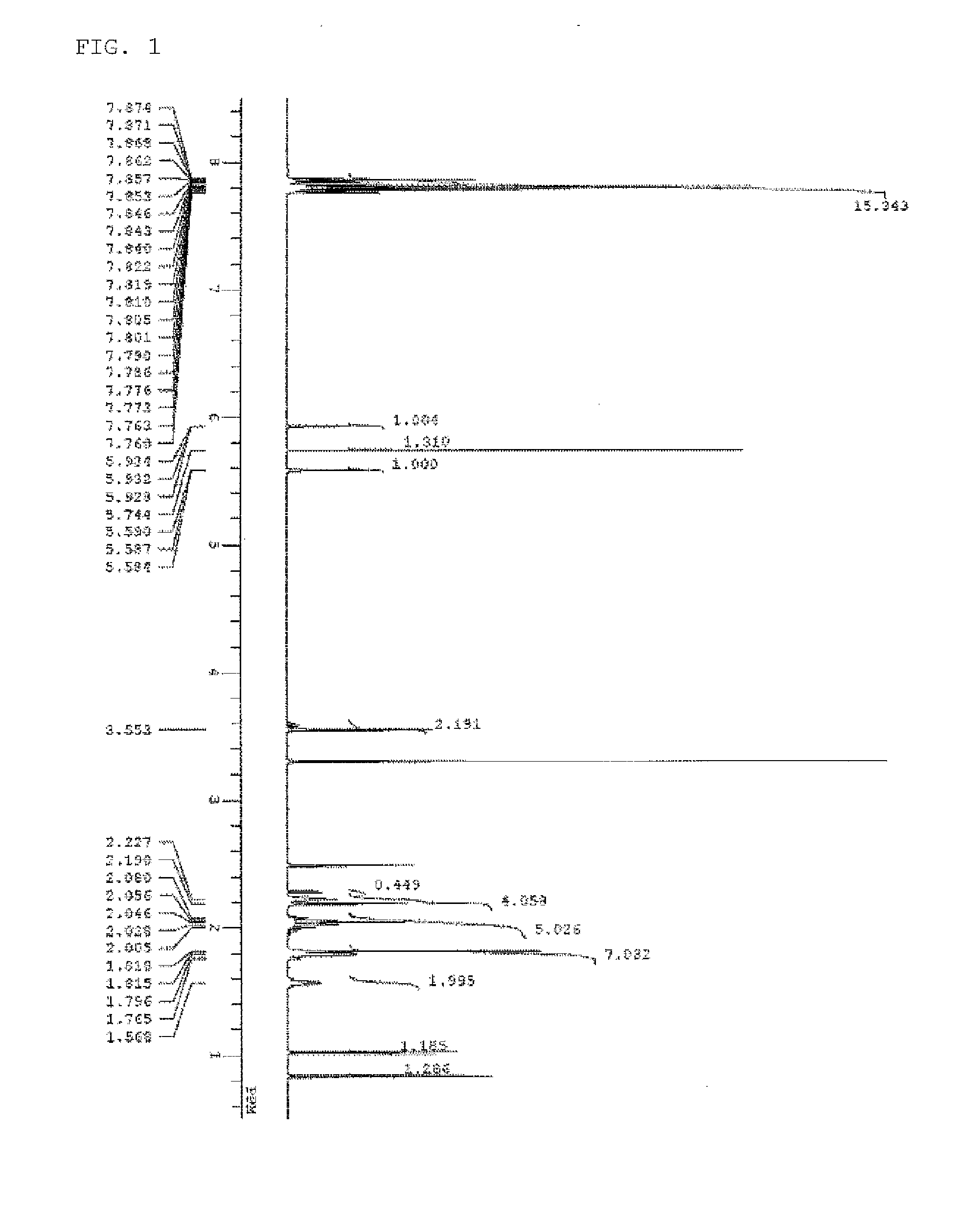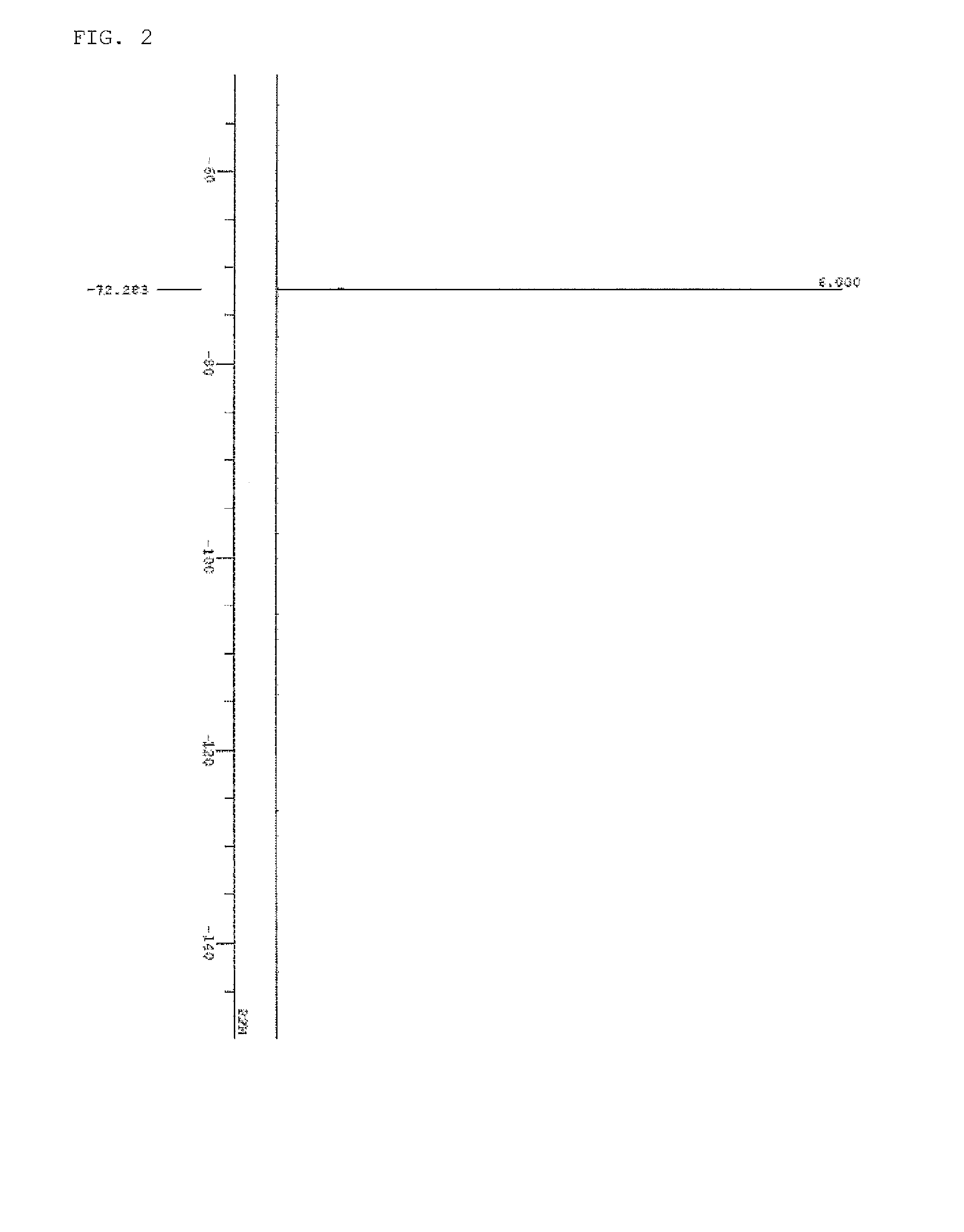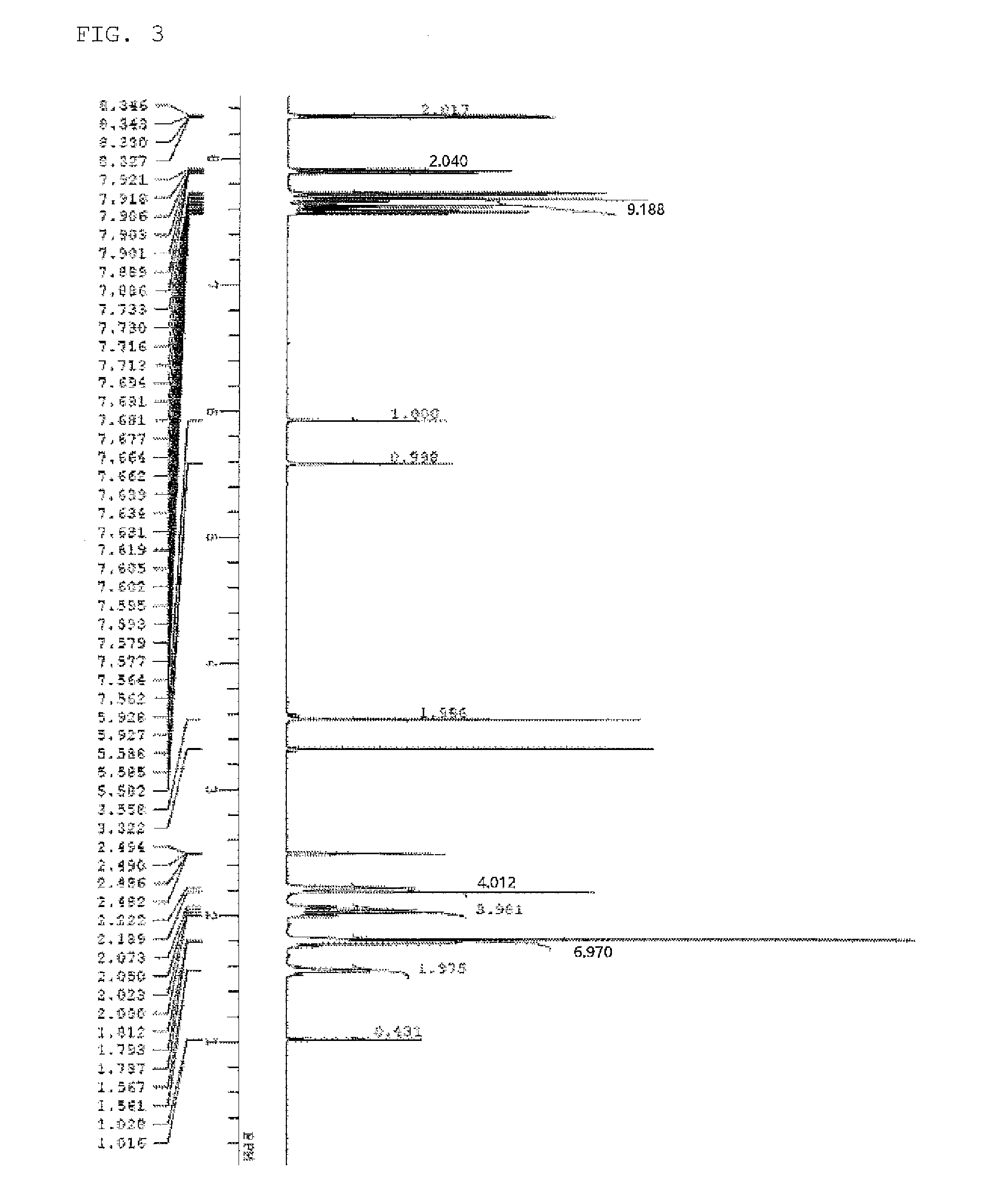Compound, polymer compound, resist composition, and patterning process
a technology of resist composition and polymer compound, which is applied in the field of compound, polymer compound, resist composition and patterning process, can solve the problems of difficult to be used for resist composition, low decomposability, biological concentration and toxicity, and delay in development, and achieves high resolution, high sensitivity, and water sliding property of film surface.
- Summary
- Abstract
- Description
- Claims
- Application Information
AI Technical Summary
Benefits of technology
Problems solved by technology
Method used
Image
Examples
example 1-1
[0170]An aqueous solution of sodium 3,3,3-trifluoro-2-hydroxy-2-trifluoromethylpropane-1-sulfonate was synthesized in according with a method described in Japanese Patent Laid-Open Publication No. 2010-215608. To 1200 g of this aqueous solution (corresponding to 1 mol of sodium 3,3,3-trifluoro-2-hydroxy-2-trifluoromethylpropane-1-sulfonate) were added 223 g of benzyltrimethylammonium chloride and 2000 g of methylene chloride, the mixture was stirred for 10 minutes, and the organic layer was collected. The collected organic layer was washed with water and concentrated under reduced pressure. To the concentrated residue was added diisopropyl ether for recrystallization, and the precipitated solid was collected and dried under reduced pressure to obtain an intended product, 354 g of benzyltrimethylammonium=3,3,3-trifluoro-2-hydroxy-2-trifluoromethylpropane-1-sulfonate (PAG intermediate 1) as a white solid, with a yield of 86%.
example 1-2
[0171]3-methacryloyloxy-1-adamantanecarbonic acid reacted with oxalyl chloride in a toluene solvent to synthesize carboxylic acid chloride. The resulting carboxylic acid chloride was mixed with methylene chloride to form a 25 mass % solution.
[0172]Then, 123 g of PAG intermediate 1, 45 g of triethylamine, 9 g of 4-dimethylamino pyridine, and 600 g of methylene chloride were mixed to prepare a solution, and the aforementioned methylene chloride solution of carboxylic acid chloride was added dropwise to the mixed solution under ice-cooling. After dropwise addition, the mixture was aged at room temperature for 10 hours, followed by adding dilute hydrochloric acid to quench the reaction. Then, the organic layer was collected, washed with water, and concentrated under reduced pressure. To the concentrated residue was added 1500 g of diisopropyl ether for to precipitate a crystal. The obtained crystal was collected by filtration, and dried under reduced pressure to obtain an intended produ...
example 1-3
[0173]66 g of PAG intermediate 2, 41 g of triphenylsulfonium=methylsulfate, 400 g of methylene chloride, and 200 g of pure water were mixed to prepare a solution, and the mixed solution was stirred at room temperature for 30 minutes. Then, the organic layer was collected, washed with water, and concentrated under reduced pressure, and 300 g of methyl isobutyl ketone was added thereto. This mixture was washed with water again and concentrated under reduced pressure. The concentrated residue was then washed with diisopropyl ether to obtain 72 g of triphenylsulfonium=3,3,3-trifluoro-2-(3-methacryloyloxy-1-adamantanecarbonyloxy)-2-trifluoromethylpropane-1-sulfonate (PAG Monomer 1) with a yield of 93%.
[0174]The spectrum data of PAG Monomer 1 thus obtained are shown below. The results of nuclear magnetic resonance spectrum (1H-NMR, 19F-NMR / DMSO-d6) are shown in FIG. 1 and FIG. 2. Meanwhile, a trace of residual solvent (diisopropyl ether, methylene chloride, and methyl isobutyl ketone) and...
PUM
| Property | Measurement | Unit |
|---|---|---|
| refractive index | aaaaa | aaaaa |
| size | aaaaa | aaaaa |
| resist composition | aaaaa | aaaaa |
Abstract
Description
Claims
Application Information
 Login to View More
Login to View More - R&D
- Intellectual Property
- Life Sciences
- Materials
- Tech Scout
- Unparalleled Data Quality
- Higher Quality Content
- 60% Fewer Hallucinations
Browse by: Latest US Patents, China's latest patents, Technical Efficacy Thesaurus, Application Domain, Technology Topic, Popular Technical Reports.
© 2025 PatSnap. All rights reserved.Legal|Privacy policy|Modern Slavery Act Transparency Statement|Sitemap|About US| Contact US: help@patsnap.com



